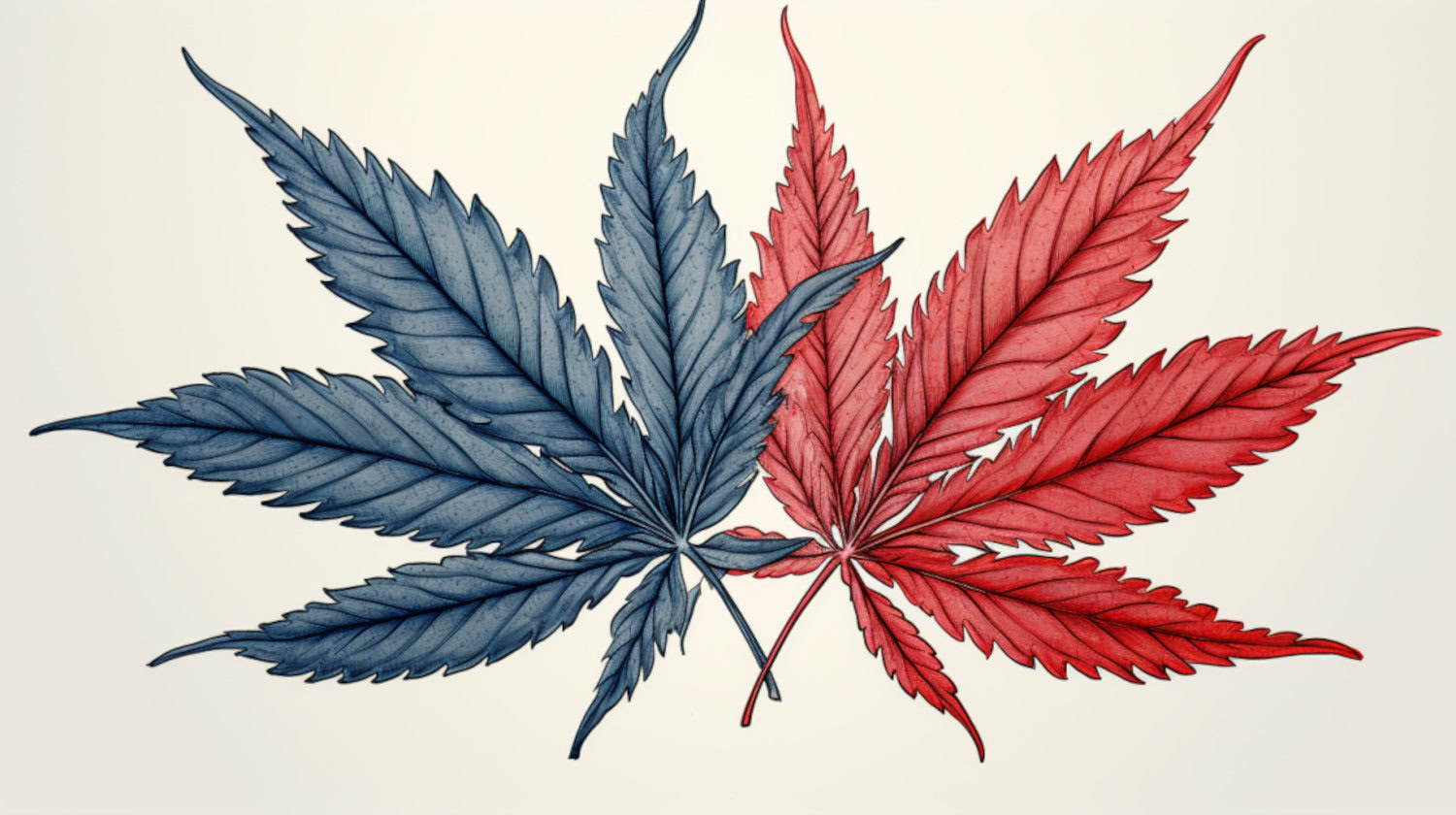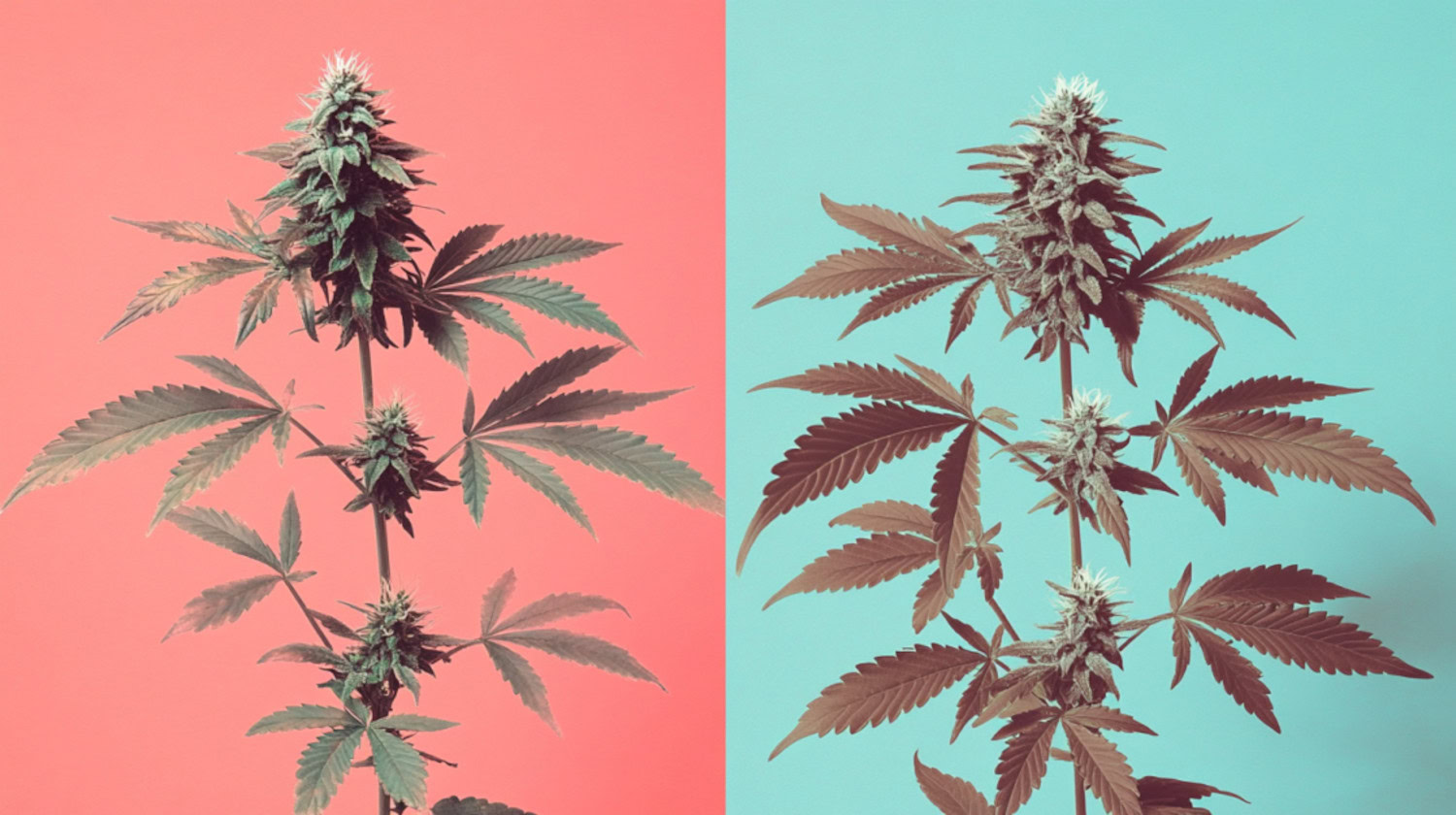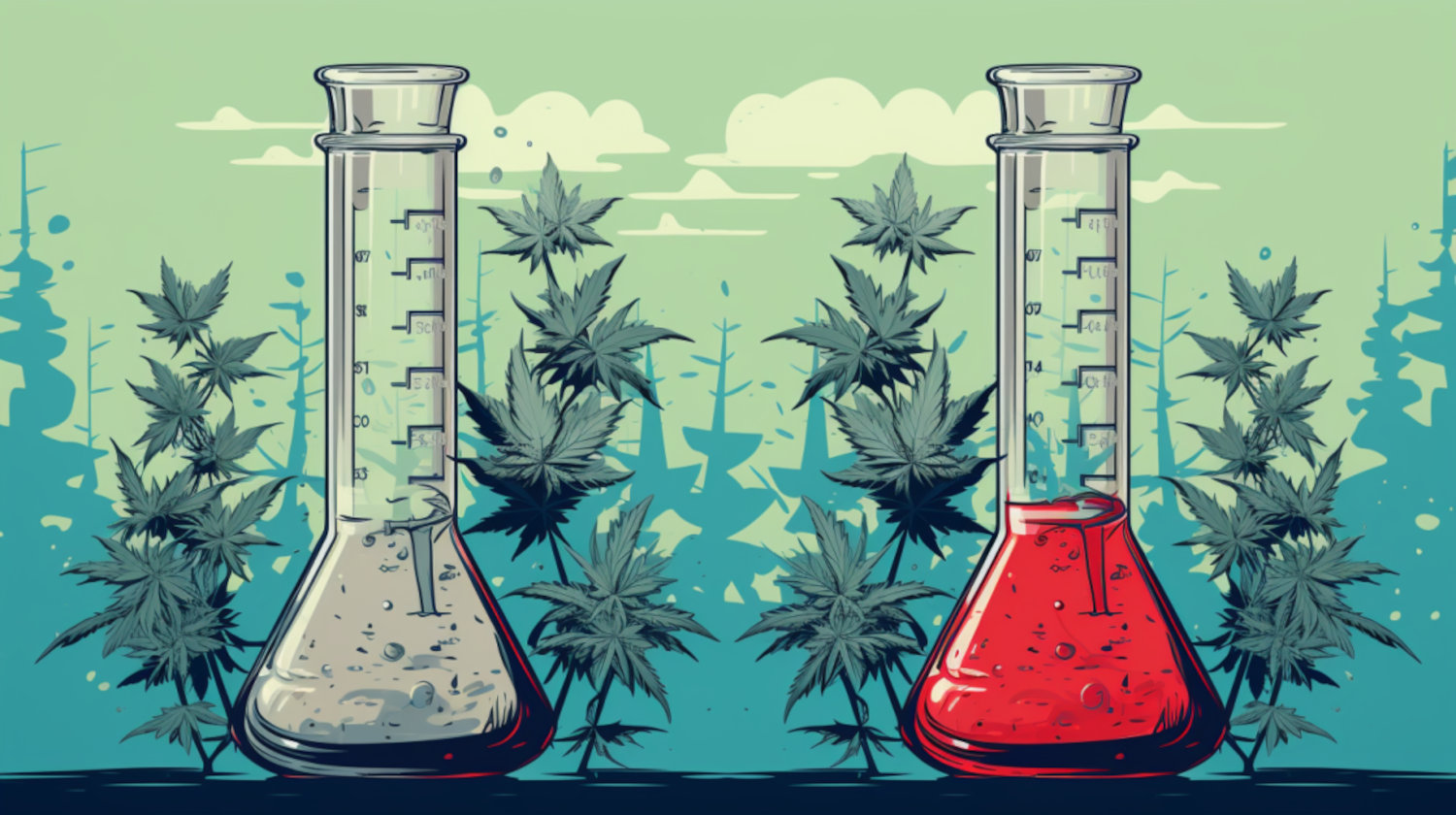In This Article
- What is CBD?
- What is CBN?
- CBD vs CBN: Comparing the Two Cannabinoids
- How Do CBN and CBD Affect the Body?
- Possible Side Effects of CBN vs. CBD
- Is CBN More Powerful than CBD?
- Which is Better for Sleep: CBN vs. CBD
- Comparing CBD, CBN, and CBD+CBN Products
- CBD Edibles
- CBN Gummies and More
- CBD + CBN Blends
- Which Cannabinoid Should You Choose?
- References
Key Takeaways
- CBN is best for sleep, while CBD may help more with stress and pain relief.
- Blended products (CBD+CBN) may provide relaxation and better sleep through the entourage effect.
- You can choose pure CBN or blended products based on whether you need targeted sleep support, daytime stress relief, or both.
Cannabinoids are some of the many naturally occurring compounds in the cannabis plant.1 Each cannabinoid has unique effects and potential benefits when interacting with the endocannabinoid system.2 Two cannabinoids that are often discussed are CBD and CBN. CBD has become a staple for those seeking non-intoxicating relief from anxiety, pain, and inflammation. Meanwhile, CBN is gaining popularity for its calming properties, often linked to improved sleep.
CBD’s effects can also help with sleep in high enough doses, and there's still more to learn about CBN. This begs the question: When it comes to CBD vs CBN, how do these two cannabinoids compare? Are CBN gummies the secret to a restful night, or does CBD provide more well-rounded relief? While their effects can overlap, subtle differences might make one better suited for certain needs. Understanding these differences is key to deciding which option—or combination—works best.
What is CBD?
CBD, or cannabidiol, is a non-intoxicating cannabinoid found in cannabis. It's widely recognized for promoting relaxation, easing anxiety, and reducing pain without producing the “high” associated with THC. Researchers continue to explore CBD’s impact across a range of conditions, from epilepsy to chronic pain and anxiety.
Research shows that CBD is generally well-tolerated, with only mild side effects like fatigue, appetite changes, and occasional sedation. Clinical trials also highlight CBD's lack of abuse potential.3
One of CBD’s more promising applications is its potential to improve sleep quality. While lower doses can have a mild stimulating effect, higher doses may have a more sedating effect. Research suggests that CBD may help increase total sleep time and decrease waking up throughout the night.4,5
CBD’s anti-inflammatory and neuroprotective properties also draw attention. They show promise for chronic conditions like pain and anxiety.6 Although more research is needed, its versatility continues to make it a staple in wellness practices across a range of needs.
What is CBN?
CBN, or cannabinol, is a natural cannabinoid that forms from THC. It’s often found in aged cannabis and doesn’t produce the “high” associated with THC, but it can be mildly intoxicating for some and in higher doses. Today, many CBN products on the market are produced by converting CBD to CBN rather than extracting CBN from naturally aged flower with high levels of CBN.
Early research suggests that CBN may help with certain sleep difficulties. In one study, 20mg CBN alone helped stop sleep disturbances and reduced nighttime awakenings. About 6.8% of the participants reported mild grogginess the following day, but this effect usually faded quickly.7
Many wellness brands now offer products like CBN gummies. These gummies offer a convenient, non-intoxicating way to explore the benefits of CBN. While more research is needed, these products are becoming an option for those seeking natural ways to support sleep.
CBD vs CBN: Comparing the Two Cannabinoids

Though CBN and CBD share some similarities, their primary benefits and side effects can differ.
How Do CBN and CBD Affect the Body?
CBN and CBD interact with the body’s endocannabinoid system, which helps regulate mood, sleep, pain, and more. There are some overlapping effects, but each compound offers unique benefits, too. That may make one better suited for certain needs than the other.
CBN Effects
CBN is often described as having a calming, sleep-enhancing effect. It may promote relaxation, making falling asleep easier. CBN seems to be particularly helpful for reducing nighttime interruptions, helping patients stay asleep longer.7
These gentle effects may be why some people show interest in CBN products such as oils, capsules, and gummies. However, more studies are needed to understand exactly how CBN works.
CBD Effects
CBD may offer a broader spectrum of benefits that extend beyond sleep. Some of its commonly reported uses are for managing stress, anxiety, pain, and inflammation. It may help some users feel more balanced and centered throughout the day.3,5
When it comes to sleep, though, CBD may work differently than CBN. At higher doses, CBD may help people fall asleep faster and experience fewer disruptions during the night. However, it may have a mild stimulating effect in lower doses, making it useful for focus or stress relief.4 Its versatility makes CBD a flexible option. Many users tailor their routines by using smaller amounts during the day and higher doses at night for better sleep.
Possible Side Effects of CBN vs. CBD
Both CBN and CBD are generally considered safe. However, some patients may experience mild side effects.
CBN Side Effects
In one study on CBN's effects, 20 participants (6.8%) felt "groggy" the following day after consuming CBN. For 17 of the 20, the grogginess didn't persist throughout the rest of the day. Other non-serious side effects observed in research include headaches and occasional sleep disturbances. However, these only occurred in fewer than 5% of study participants.7
Another potential side effect is dysgeusia, a condition causing an unusual or altered sense of taste. This might result in flavors tasting metallic, sour, or bitter, though this effect is rare (only 3.4% of participants had it) and typically mild.7
CBD Side Effects
CBD’s most common side effects include fatigue, appetite changes, or mild sedation in higher doses. While these side effects are usually not serious, higher doses can lead to more pronounced drowsiness. It's important to adjust dosing according to individual needs.3
Is CBN More Powerful than CBD?
While CBN and CBD each have strengths, neither is inherently more powerful than the other. Their effectiveness depends on the desired outcome and the individual’s specific needs. CBN’s strengths lie in promoting sleep and relaxation, while CBD offers broader applications for anxiety, pain, and stress relief.
For some individuals, combining both cannabinoids may provide the best results. Blends might help stimulate an entourage effect that may intensify the effects of both cannabinoids.
Which is Better for Sleep: CBN vs. CBD
Choosing between CBN and CBD for sleep depends on personal preference and dosage. Research suggests that CBN may help users stay asleep longer by reducing nighttime disturbances. In contrast, CBD’s effect on sleep can vary with dosage. Lower doses may stimulate, while higher doses may sedate.
Some individuals may benefit from trying both cannabinoids at different doses or times of day. CBN could be more effective for those who need help falling and staying asleep. Others who experience stress-induced insomnia might prefer CBD for its potential to ease tension before bed.
Comparing CBD, CBN, and CBD+CBN Products

As the wellness market grows, so do the product options for CBD, CBN, and blends that combine both cannabinoids. Each product type offers unique benefits depending on how the cannabinoids are used together. Exploring the differences may help you decide which might best fit your needs.
CBD Edibles
CBD products are ideal for managing anxiety, pain, and stress without causing drowsiness (at lower doses). They are versatile enough for daily use in oils, capsules, or edibles. Popular CBD edibles, such as gummies or chocolates, are easy to dose and can provide long-lasting effects. Many users turn to CBD edibles to stay calm and focused during the day or use higher doses at night to wind down without heavy sedation.
CBN Gummies and More
Pure CBN products are relatively rare, as most are blended formulations. However, some excellent options are still available. As research shows, even CBN alone may be beneficial for sleep.7
Plain Jane's CBN Oil
Each half-dropper of Plain Jane's CBN oil contains approximately 20mg of CBN. At 1,000mg CBN per bottle, the brand recommends just one to two drops under the tongue daily to familiarize yourself with the effects. Gradually increase to find the right serving size for your specific sleep needs. The oil is free from CBD and THC, making it a great choice for users who prefer to avoid other cannabinoids.
Charlotte’s Web's Stay Asleep CBN Gummies
Melatonin-free, Charlotte's Web's Stay Asleep CBN gummies help users stay asleep and support uninterrupted sleep. Formulated from US-grown hemp, each gummy contains a precise dose of 20mg CBN. They provide a non-intoxicating way to relax before bed, helping users fall asleep naturally and stay asleep longer. They also have a huckleberry flavor, which offers something unique to the market.
CBD + CBN Blends
Sometimes, CBD+CBN blends offer a more comprehensive approach. These products utilize the entourage effect, where cannabinoids may enhance each other’s effects. Combining CBN and CBD may result in deeper relaxation and improved sleep quality.
WYLD’s CBD + CBN Elderberry Gummies
WYLD, one of the nation's most famous edible brands, has long marketed a 2018 Farm Bill-compliant CBD + CBN gummy. Each gummy contains a precise serving size of 5mg CBN and 25mg CBD. Its elderberry flavor makes for a tasty bedtime treat and may help patients wind down and maintain uninterrupted sleep.
BATCH’s Nighttime CBD + CBN Gummies
These raspberry-flavored vegan and gluten-free gummies from BATCH are made with passion flower extract and L-theanine, both known for their sleep-support potential. They come in two strengths: a blend of 25mg CBD and 15mg CBN and a blend of 50mg CBD and 30mg CBN.
Smokiez’ CBD:CBN Gummies
Formulated with CBD, CBN, and a low dose of THC, these vegan, gluten-free gummies may offer comprehensive support for sleep and stress management. Each gummy contains 25mg of CBD and 10mg of CBN.
Mary’s Medicinals CBD + CBN The Remedy Tincture
This Mary’s Medicinals tincture may be the most suitable for an even 1:1 CBD and CBN ratio. Each bottle offers 200mg of CBN and 200mg of CBD. Its flexible dosing is perfect for consumers who prefer a liquid format, making it easy to tailor a nightly routine. Said to be ideal for winding down after a stressful day, it may help some patients drift into a more peaceful sleep.
Which Cannabinoid Should You Choose?
If you’re unsure where to start, try a CBD+CBN blend for a well-rounded experience. It may help you gauge which cannabinoid combination works best for your needs.
References
- Radwan MM, Chandra S, Gul S, ElSohly MA. Cannabinoids, Phenolics, Terpenes and Alkaloids of Cannabis. Molecules. 2021;26(9):2774. doi:https://doi.org/10.3390/molecules26092774
↩︎ - Shahbazi F, Grandi V, Banerjee A, Trant JF. Cannabinoids and Cannabinoid Receptors: The Story so Far. iScience. 2020;23(7):101301. doi:https://doi.org/10.1016/j.isci.2020.101301
↩︎ - Millar SA, Maguire RF, Yates AS, O’Sullivan SE. Towards Better Delivery of Cannabidiol (CBD). Pharmaceuticals. 2020; 13(9):219. https://doi.org/10.3390/ph13090219
↩︎ - Vaillancourt R, Gallagher S, Cameron JD, Dhalla R. Cannabis use in patients with insomnia and sleep disorders: Retrospective chart review. Can Pharm J (Ott). 2022;155(3):175-180. doi:10.1177/17151635221089617 ↩︎
- Blessing EM, Steenkamp MM, Manzanares J, Marmar CR. Cannabidiol as a Potential Treatment for Anxiety Disorders. Neurotherapeutics. 2015;12(4):825-836. doi:https://doi.org/10.1007/s13311-015-0387-1
↩︎ - Shannon S. Cannabidiol in Anxiety and Sleep: A Large Case Series. The Permanente Journal. 2019;23(1). doi:https://doi.org/10.7812/tpp/18-041
↩︎ - Bonn-Miller MO, Feldner MT, Bynion TM, Eglit GML, Brunstetter M, Kalaba M, Zvorsky I, Peters EN, & Hennesy M. A double-blind, randomized, placebo-controlled study of the safety and effects of CBN with and without CBD on sleep quality. Experimental and Clinical Psychopharmacology, 2024;32(3):277–284. https://doi.org/10.1037/pha000068
↩︎
The information in this article and any included images or charts are for educational purposes only. This information is neither a substitute for, nor does it replace, professional legal advice or medical advice, diagnosis, or treatment. If you have any concerns or questions about laws, regulations, or your health, you should always consult with an attorney, physician or other licensed professional.




